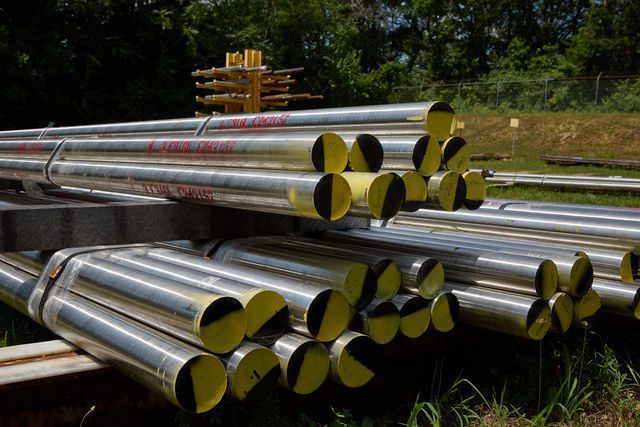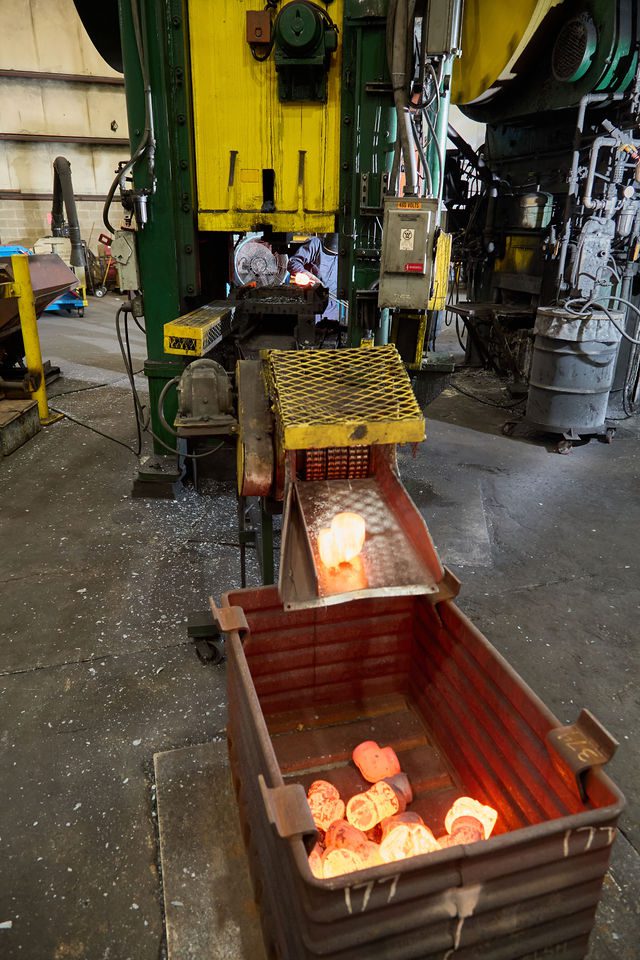Manufacturing Capabilities
US Drop Forge’s core production method is closed-die forgings. We offer a variety of methods and materials to ensure your company receives the products it needs at the highest possible quality and competitive prices.
Whichever process you select, you’ll receive high-quality forgings, routed through the most cost-effective forging process for your parts. No matter how demanding your specifications or requirements, we look forward to meeting them.
We offer two key processes, which are each variations of the closed-die forging process involving two dies pressed together under extreme force at an exact temperature:

- Drop hammer forging: This process is carried out on a series of die impressions using repeated blows to control the size and detail of the finished forging. The method supports large forgings and difficult-to-forge alloy materials thanks to the hammer’s ability to deliver multiple controlled blows.
- Press forging: This approach is carried out on a press with a succession of die impressions. Unlike drop hammer forging, there is just one blow with a controlled amount of force to control the size and detail of the finished forging.

Material Grades
We offer a range of alloys approved for even the most heavily regulated and precision-driven industries. From our U.S. facility in Woolwich Township, New Jersey, we personally oversee the quality of our forgings.
We proudly hold ISO 9001 Certification as well as Pressure Equipment Directive (PED) Certification. Our materials carry ASTM, ASME, ISO, SAE, MIL, TUV, and IBR certifications, among others.
Our forging capabilities, along with their maximum weight capacities, include:
- Carbon steels, 100 lbs.
- Alloy steels, 75 lbs.
- Stainless steels, 50 lbs.
- Aluminum alloys, 35 lbs.
- Copper alloys, 75 lbs.
- Titanium alloys, 60 lbs.
- High-temperature alloys, 25 lbs.
Special Order Handling
US Drop Forge stands ready to produce your custom and emergency forging needs, with fast turnaround times on quotes, priority scheduling for urgent jobs, and dedicated support services available if you need a prototype or a one-off forging.
We can meet your exact specifications with services including:
- Electropolishing.
- Cleaning.
- Custom labeling.
- Order tagging.
- Special marking.

Why Choose US Drop Forge?
At US Drop Forge, we’ve been providing proven quality for a diverse roster of clients across industries since 1967. Since our founding, we’ve grown into a global supplier while maintaining our ability to offer competitive pricing and on-time delivery.

Explore More
You need a forging partner you can trust for your demanding applications, so we encourage you to learn more about US Drop Forge. Our quality commitment, certifications, and industry experience demonstrate what we can do for your project.
Request a Quote
If you’re ready to request pricing for your next forging project, discuss special requirements, or learn more about our material specifications, contact us and learn more.
